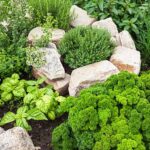Small garden spaces can be a challenge for many home gardeners, but with a little creativity and planning, even the tiniest of outdoor spaces can be transformed into a green oasis. One of the key considerations when working with a small garden space is maximizing every inch of available space. This means utilizing vertical space as well as horizontal space to make the most of the area.
Vertical gardening techniques such as hanging baskets, trellises, and wall-mounted planters can help you take advantage of limited space in a small garden. These options not only look visually appealing but also help to free up floor space for other uses. Additionally, vertical gardening can provide a solution for growing plants that may not thrive in the limited sunlight of a small garden.
When planning a small garden space, it’s important to choose plants that are well-suited to the conditions of the space. This includes considering factors such as sunlight, soil type, and climate. Opting for compact or dwarf varieties of plants can also help to maximize space without sacrificing greenery. Additionally, choosing plants that are versatile, such as herbs or edible plants, can provide both visual interest and practical use in a small garden.
Another consideration for small garden spaces is creating a sense of unity and cohesion within the space. This can be achieved by utilizing a consistent color scheme, repeating certain plant varieties throughout the garden, or incorporating elements such as pathways or borders to define different areas of the garden. By creating a sense of flow and continuity, even a small garden space can feel more expansive and inviting.
Incorporating elements such as seating areas, water features, or decorative accents can help to add interest and personality to a small garden space. These elements can provide a focal point for the garden and create a sense of relaxation and tranquility in the space. Additionally, incorporating sensory elements such as fragrant plants or wind chimes can help to enhance the overall experience of spending time in a small garden.
Finally, maintenance is key when it comes to small garden spaces. Keeping the space well-tended and organized can help to maximize the visual impact of the garden and prevent it from feeling cluttered or overwhelming. Regular pruning, watering, and weeding are essential tasks for keeping a small garden looking its best. By investing time and effort into maintaining a small garden space, you can create a beautiful and functional outdoor oasis that you can enjoy for years to come.













